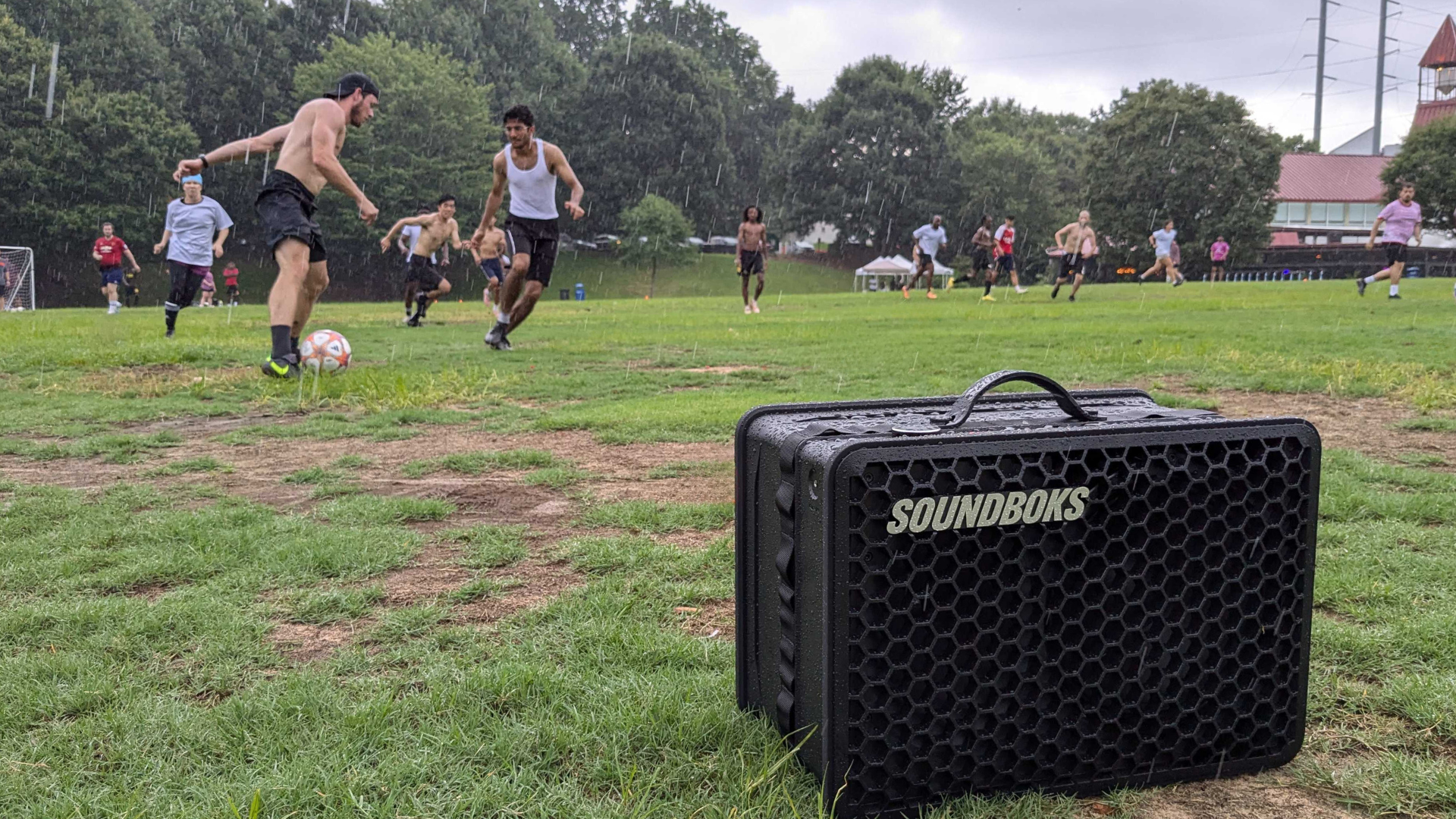The Soundboks Go Is the Most Powerful Party Speaker You Can Carry in One Hand
-
The Good
- Very loud for its size
- Easy to carry
- Adjustable EQ
- AUX connectivity
- 40-hour battery that doubles as a powerbank
- Fast charging
- Can play music while charging
- Replaceable battery
- IP65-rated (dust- and splash-proof)
The Bad- Expensive
- No distinctive special features
- No connection for Guitar, DJ mixer, microphone, or instruments
- Only mono audio channel with single speaker
- No physical controls for music on the speaker
- Buggy app for Android phones
Table of Contents
Soundboks has been making a name for itself in the party scene over the years. The company has been around since 2015, but I didn't hear about it until it released its third-generation Soundboks speaker. As you can guess by now, Soundboks specialize in stage speakers tailored for parties—until 2022 that is, when it released its first portable party speaker, the Soundboks Go. It's a smaller version of the company's flagship party-size speaker, the Soundboks 4, that you can carry around more easily with one hand. It's also the most powerful portable party speaker I've used.
Although the speaker is great at what it does, it lacks other aspects from the bigger flagship speakers that could've made it much better. At $699, it's also expensive, but I can see it serving a purpose for those who need power and quality in a compact 20-pound speaker. Still, if you're looking for an indoor party speaker with more features, I generally recommend the PartyBox Stage 320 instead. Soundboks sent me this portable speaker for review.
First impressions of the Soundboks Go
I took the Soundboks Go out to test it the same way I test all of my outdoor speakers: on the soccer field with over 20 players running around the pitch. The speaker is light at 20 pounds and comfortable enough to carry for long distances thanks to its handle. It doesn't feel fragile; instead, it feels prepared to take a hard soccer ball shot to its plastic honeycomb grille and not be fazed.
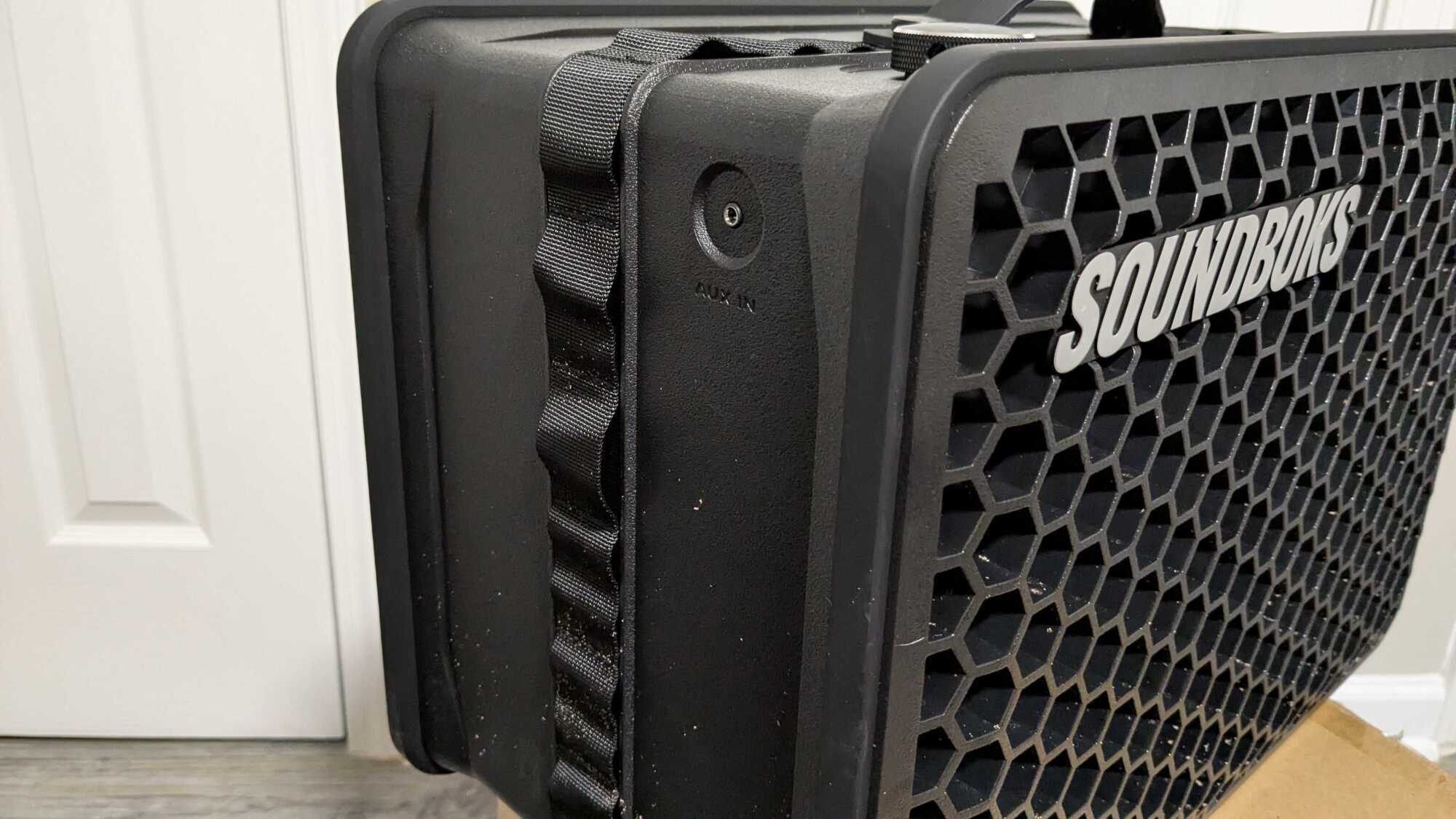
I stood on the opposite side of the pitch while the speaker was at 75% volume, and it was still incredibly loud. The Soundboks Go can get up to 121 dB with a total output of 144 watts, according to Soundboks. The sound did not feel distorted even at full volume, and stayed balanced and crisp.
There were other people on the field with speakers, too, but the Soundboks Go easily overpowered them. Once it started to rain, the Soundboks Go was also the only speaker left on the field. Many players came up to me concerned that the speakers would get damaged with the rain, but were happy to hear the music didn't need to stop since the speakers are IP65-rated (dust- and splash-proof), so the party continued through the wet and muddy conditions.
Features of the Soundboks Go
The Soundboks Go doesn't excel in special features. There are a good amount of connections, controls, and features missing here. It still keeps the most important ones, like the TeamUP feature that allows you to pair the speaker with up to four other Soundboks speakers to play in sync. Linking it with another speaker is also the only way to get stereo sound from this speaker. Once you connect it with other speakers, you can select which speaker plays left, mono, or right channels. There's also a SKAA Pro Mode feature to reduce the latency between paired speakers, but I couldn't try any of these features, as I only had one speaker to test with.
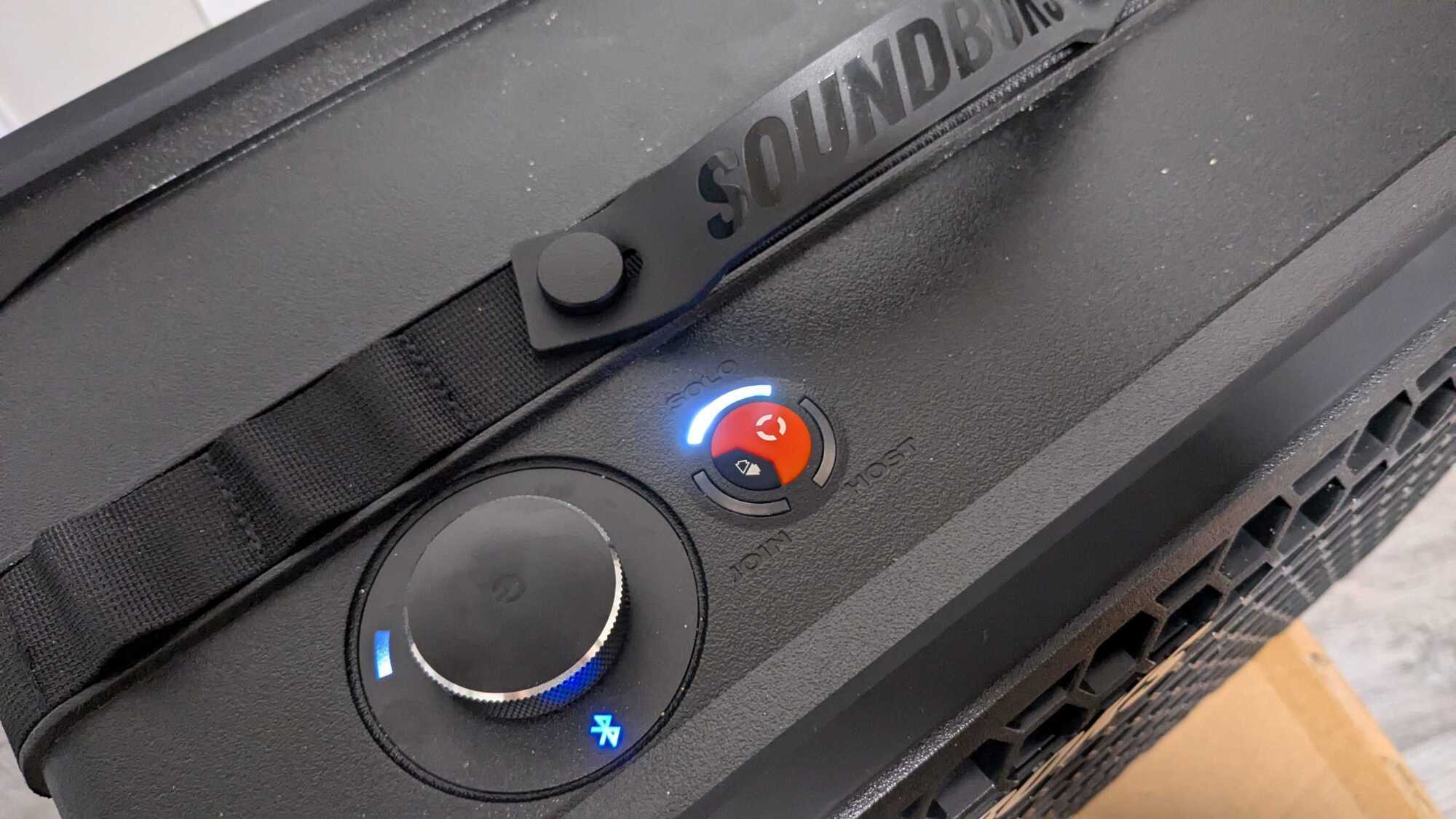
For convenience, I can make the Soundboks Go pair automatically to my phone when I turn the speaker on (and can turn that feature off as well), but there is no multi-device pairing, so I can't switch between multiple devices.
The Bluetooth range for the Soundboks Go is impressive. I could go to the farthest point of my home with two rooms and a kitchen worth of walls in between without the sound being affected. On the soccer field, I was able to stand across the soccer pitch without the audio faltering. Soundboks says the range is 150 feet.
The Soundboks app
The Soundboks app is simple and straightforward, but despite the many long updates I had to make, it was still buggy on my Google Pixel 6a Android phone. There are no physical controls on the speaker to pause or skip the media other than the volume rotary dial, so I had to use my phone for all media control. It was frustrating that most of the time that I wanted to go into the settings of the app to change the EQ, the speaker would disconnect from my app (but I could still control the music from Spotify and adjust the volume). But this is something that hopefully gets fixed with more updates.
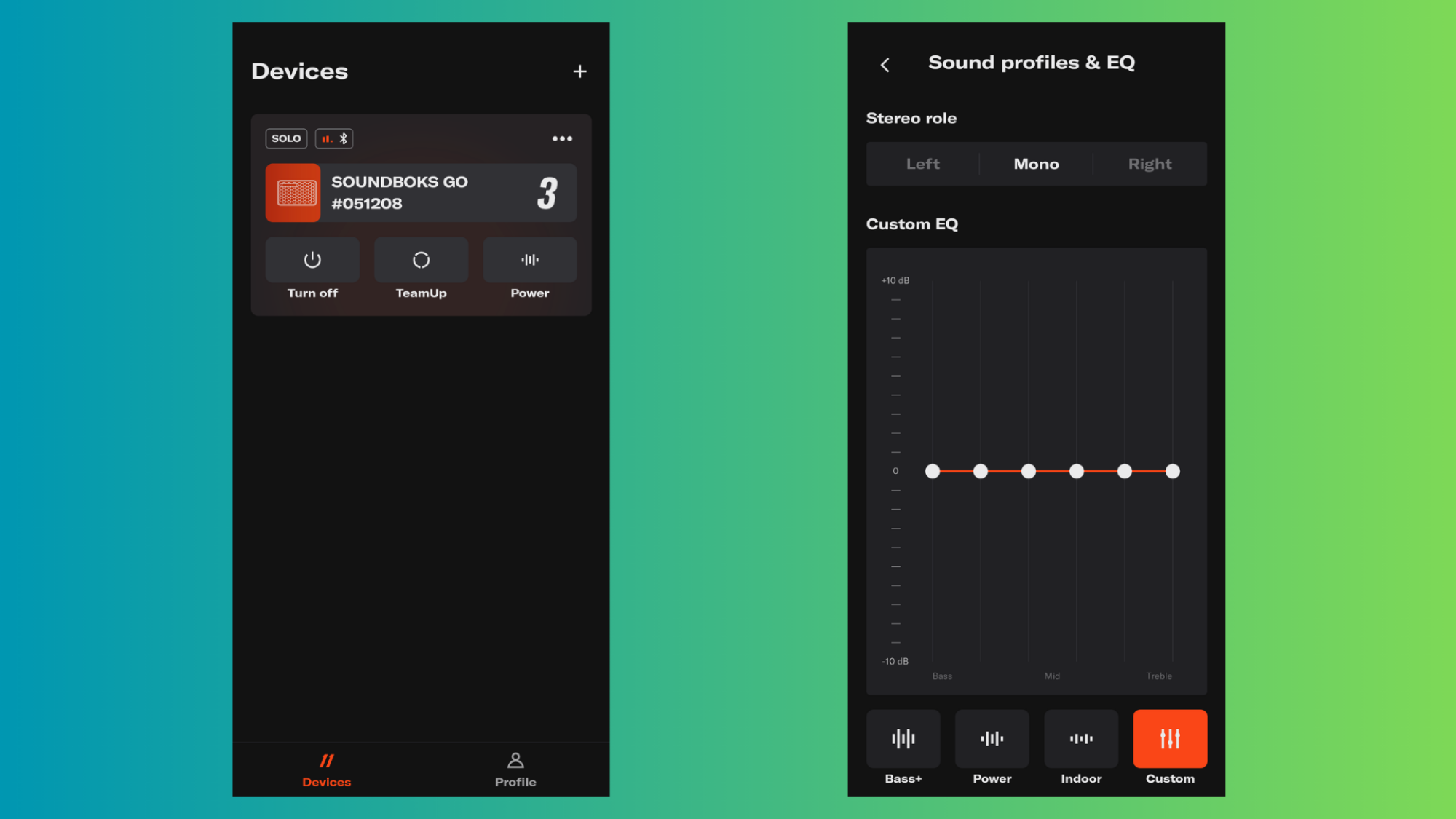
The app lets you control the volume, turn the speaker off, use the TeamUp feature, and change the EQ. The EQ is customizable in real-time, so you can hear the difference when moving the lever in the app up and down (as long as the app doesn't disconnect). The audio really shines with the preset EQ settings, though. You can choose between 'BASS+', 'POWER', and 'INDOOR' presets, and I found they each have a best-use case.
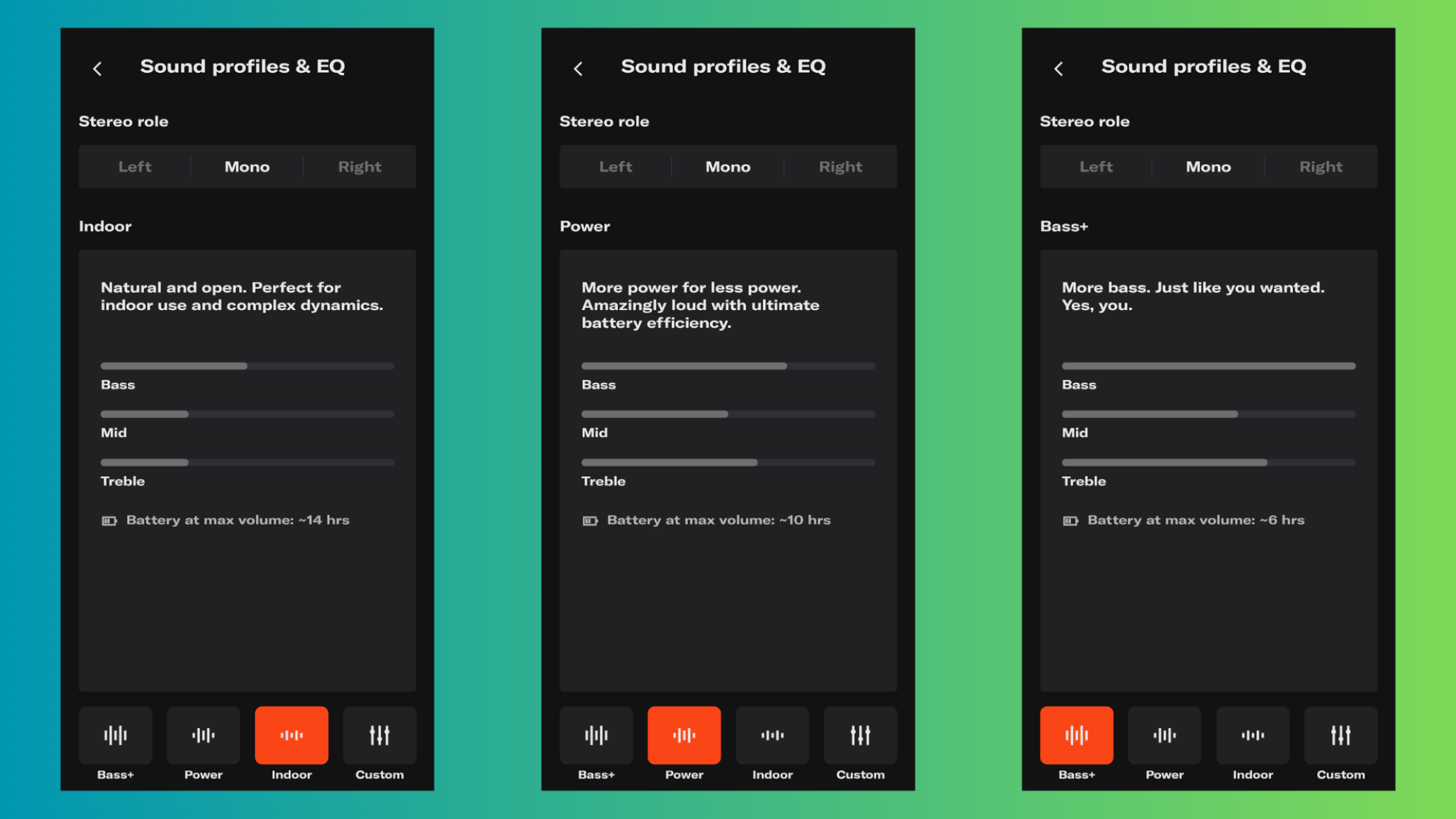
Bass+: Best used when outdoors to use the 10-inch woofer to its maximum potential. It's loud with a thumpy bass. It reduces the battery life to about six hours when blasting at maximum volume.
Power: My preferred mix of bumpy bass and clear mids while still giving you 10 hours of battery life at max volume.
Indoors: Perfect when I'm indoors and don't want to annoy my fiancée while we work from home. The sound has less bass and brings out the one-inch tweeter for more high-end nuance.
The default flat EQ is not impressive, although it does give you the longest battery time of up to 40 hours at medium volume. You really get to hear and feel the potential of the speaker when you use one of the three signature EQ settings.
Other things to note on the Soundboks Go
The battery is one of the main attractions of this speaker. It is one of the most powerful ones I've seen on a portable speaker of this size. I was able to use it for over 10 hours at multiple volume levels and EQ settings before I needed to charge it again. It also charges very fast, needing only two hours to max out. Soundboks says you can also use it as a powerbank as long as you have a female DC-connector for it.
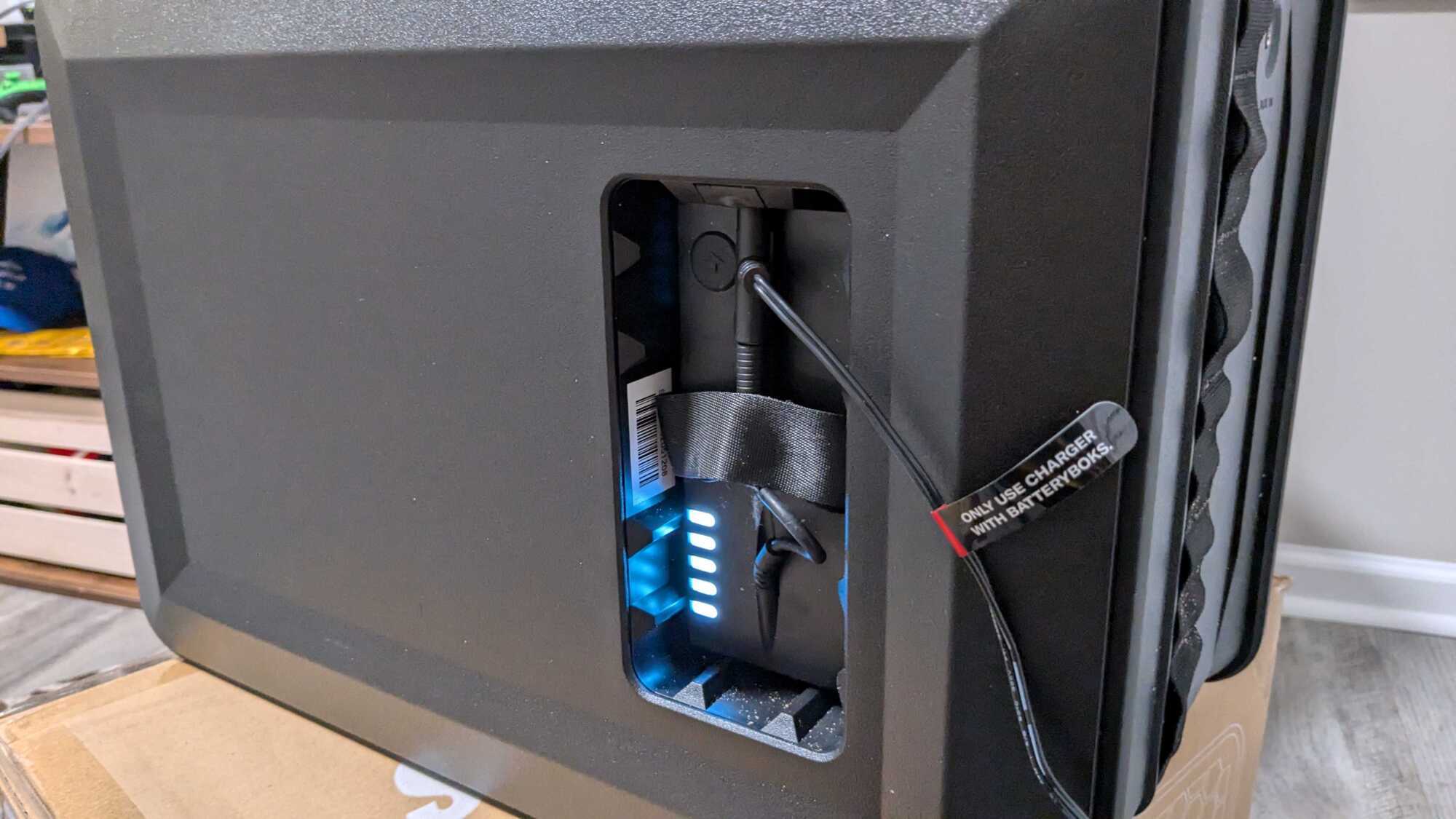
Thanks to the T-jack cable that comes with the speaker, you can play music while charging the speaker, but there are a couple of caveats: You can only play the music up to the fifth volume 5 setting out of 11 (it's loud enough for most indoor or small outdoor activities) and you can't leave the battery charging for more than six hours or you risk damage to it. Also, you shouldn’t power the speaker using the charger alone with no battery (although I did it and it worked under volume 5)—the battery always has to be connected, according to the manual.
Soundboks has a pin code feature, too, so only those who know the four-digit pin can connect to the speaker, a smart option for an outdoor speaker designed to be used in party settings with many people likely under the influence of whatever is legal in your state. If one of those impaired party persons were to steal the speaker, there is a way to completely lock out the speaker from the app by marking it as stolen. Soundboks lets users register the speaker with the serial number to the account.
Closing thoughts
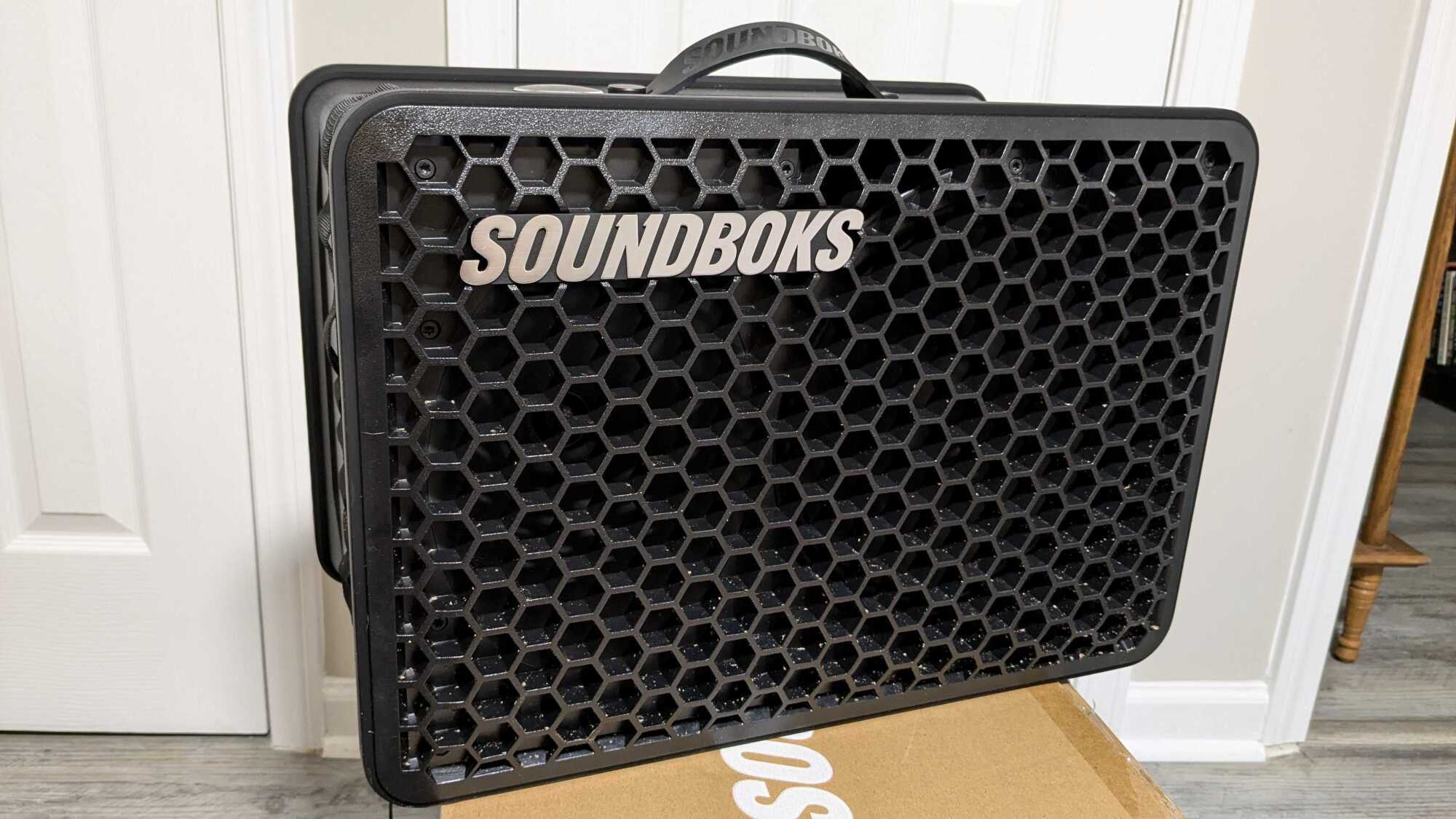
While the Soundboks Go is designed for parties, it only really excels during outdoor events. It gets incredibly loud while maintaining a clear and balanced sound, which is impressive for its size. It's easy to carry around with one hand, and the battery lasts up to 40 hours, so odds are it'll last the whole party. The quick two-hour charge time and ability to play music while charging can be the difference between a party and a bust, and being dust- and splash-proof means it will handle almost any kind of party. However, it is expensive and lacks unique features, costing more than the JBL PartyBox Stage 320, which has better interactive features that can make a party more fun without giving up on sound quality or volume.
If you're looking for power and connections for instruments or microphones, the refurbished third-generation Soundboks speaker costs the same amount and offers better options. But if you're looking for a portable speaker with a reliable battery and powerful sound, this is a great option, as long as it fits your budget.
Specs
Battery Life: Up to 40 hours at mid-volume and 10 hours at maximum volume (takes 2 hours to fully charge). A removable 99.84Wh, 7.8Ah, and 12.8V rechargeable battery.
Connectivity: Bluetooth 5.0 with TeamUP for connecting up to five Soundboks speakers, and a 3.5mm aux input.
Inputs: 1 × 3.5mm stereo input (AUX), Bluetooth.
Drivers: One 10-inch woofer and one 1-inch silk dome tweeter.
Power Output: 2 × 72-watt Class D amplifiers, reaching up to 121 dB. Total power output of 144 watts.
Water Resistance: Splash-proof with an IP65 rating for internal electronics.
Size: 18 × 12 × 10 inches.
Weight: 20 lbs.

Daniel is a Staff Writer for Lifehacker. He served in the U.S. Navy, where he reached the rank of Petty Officer 3rd Class as a Logistic Specialist and was awarded a Navy Community Service Medal and Navy Letter of Commendation for his exemplary service aboard the USS Theodore Roosevelt aircraft carrier. He earned his bachelor's in Environmental Science from the University of California, Davis, and earned his master’s degree from the Columbia University Graduate School of Journalism. Daniel was a business reporter for the Miami Herald before joining Lifehacker. He lives in Atlanta, GA.
